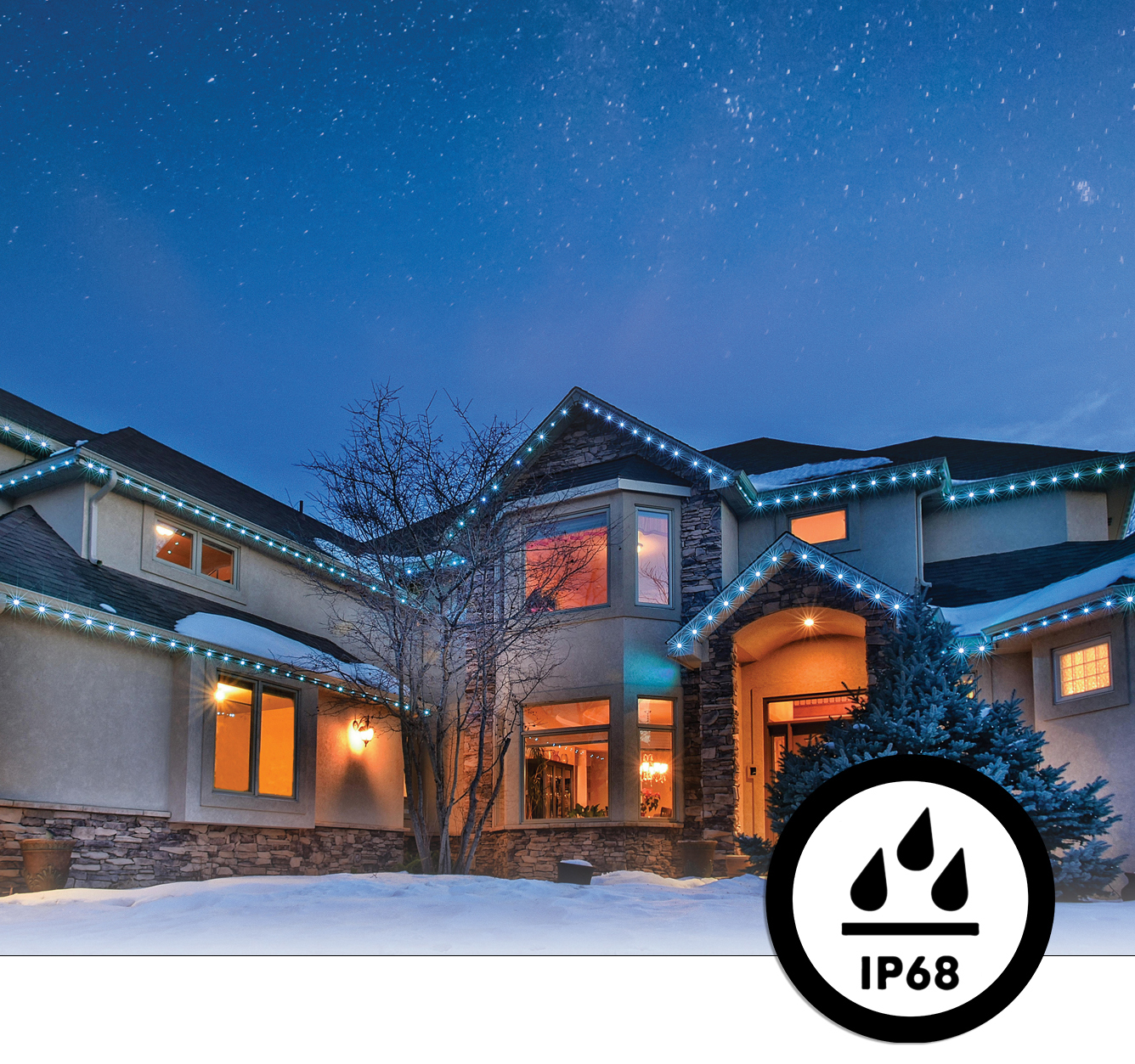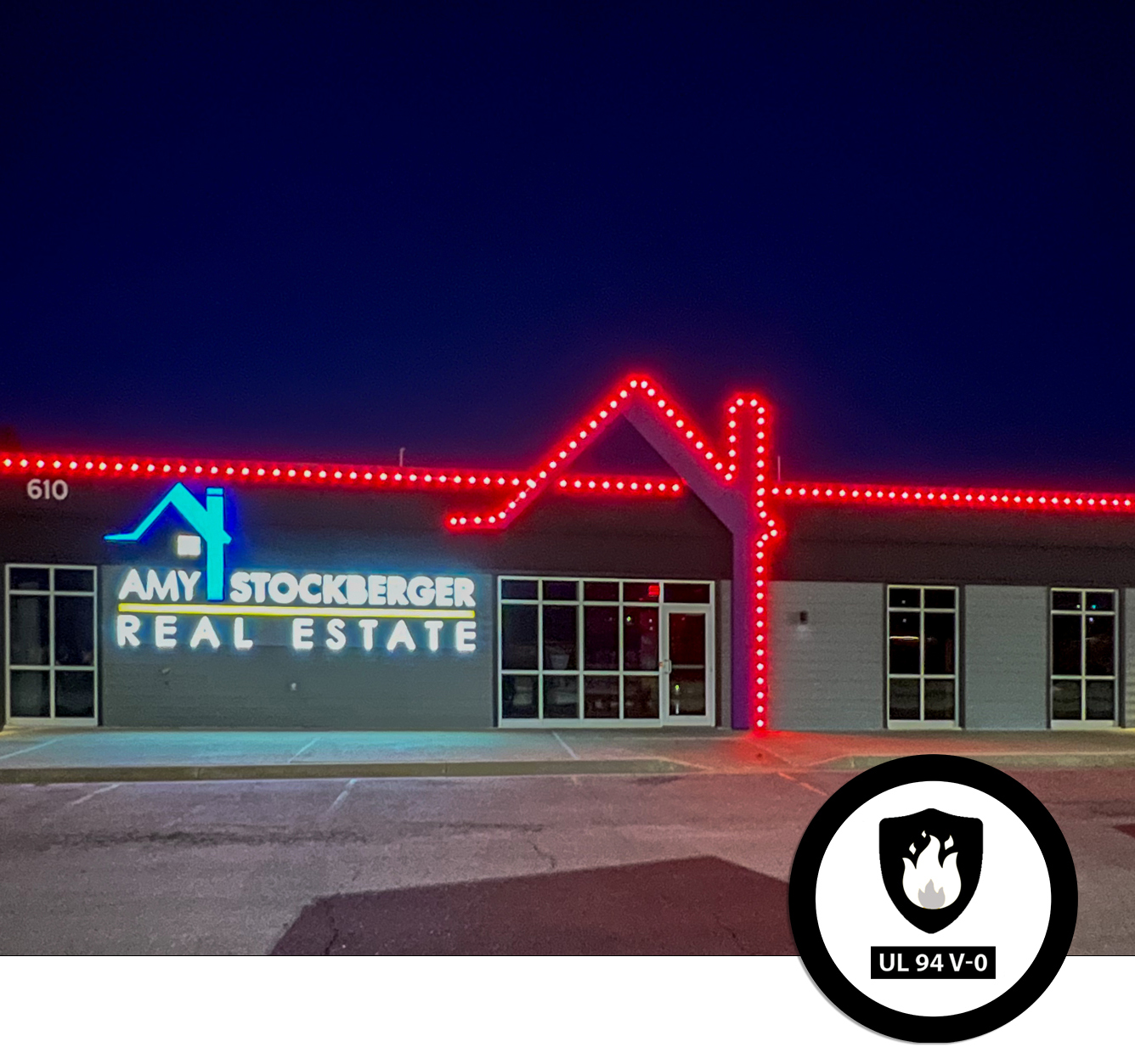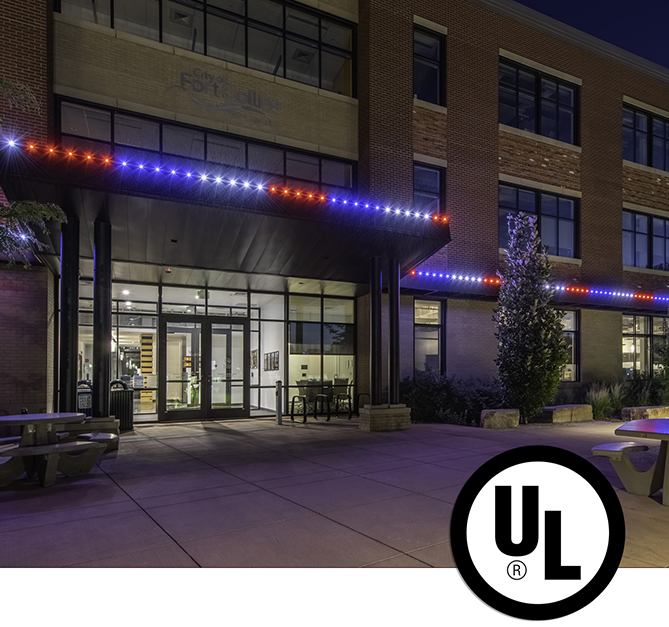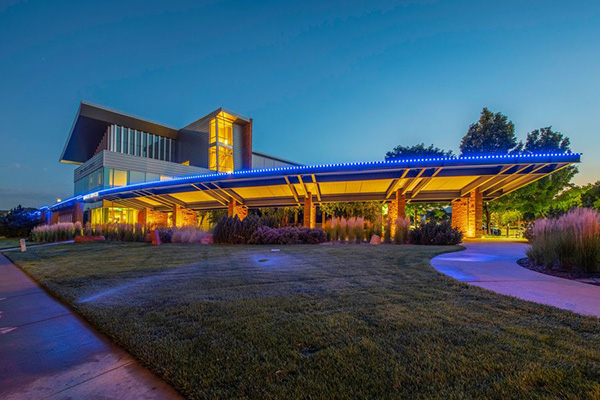ESSENTIAL LIGHT RATINGS
Researching the best-rated Christmas lights?
Be sure to understand these important ratings.

With an outdoor lighting system, you’ll want to make sure these lights can hold up to the elements — from solid particles that can damage circuitry to liquids that obviously can impair electrical functions. An IP rating has two digits. The first number indicates the level of protection against the solid objects, like dust. The “6” in the IP rating marks the highest possible solid rating, totally protecting the LEDs against dust. The second digits defines protection against moisture. When an LED light strip is rated IP68, it is protected from long-term immersion.
In the permanent holiday lighting industry, consumers can use this chart to compare the current ratings of the top products on the market. Only one product on the market (Oelo) holds an IP68 rating, while the rest of the systems only meet the lower IP67 standard. So, what’s the difference between an IP67 vs. IP68 rating? This lower rating only protects against short-term exposure. There are even products on the market with a mere IP65-rated control box, which if left in standing water could fail, ultimately compromising the whole system. In short, you want a system that is build to withstand the elements, and this rating can help you determine whether your system is built for the elements.

Look for a UL 94 flame rating, particularly with a V-0 rating
According to the National Fire Protection Association (NFPA), electrical distribution or lighting equipment is the third leading cause of home fires. In 2019, there was an estimated 47,700 reported home structure fires involving electrical failure or malfunction, resulting in 418 civilian deaths, 1,570 civilian injuries and $1.4 billion in direct property damage. Most of these fires were caused by electrical distribution or lighting equipment, with cords and plugs accounting for a significant portion of the equipment involved. Now consider this: holiday lighting systems often combine hundreds of linear feet of cords, plugs and wiring!
For that reason, permanent holiday lights should be stamped with a UL 94 flame rating, a flammability standard released by the Underwriters Laboratories of the United States, which determines the plastic material’s tendency to either extinguish or spread the flame once ignited. Within the UL 94 rating, there are classifications, ranging from a V-0 to V-2 rating. The V-0 rating is the safest, denoting materials that are not only highly resistant to ignition but self-extinguish within 10 seconds. Last check of permanent holiday lighting manufacturer websites shows Oelo is the only brand to list a V-0 fire safety rating.

UL CERTIFICATION FOR PERMANENT
HOLIDAY LIGHTING PRODUCTS
In addition to the UL 94 flame rating, there are other “UL rated electrical equipment” classifications that systems can be tested for, using rigorous Underwriters Laboratories standards. These additional ratings play a crucial role in ensuring that electrical devices don’t pose a hazard — an important precaution considering electrical malfunctions account for 13% of residential fires in the U.S. The UL mark is one of the most widely recognized and trusted symbols of safety for consumers globally, given the UL’s stringent standards and its third-party affiliation.
A comparison of permanent holiday lighting companies shows that in this emerging market, only two of the top six brands have sought additional UL ratings, and of those two companies, only one offers a patented design, which further adds to the validity of this particular permanent system. Oelo is one of the three manufacturers with a patented, UL-rated product. In short, these added third-party ratings help consumers subjectively qualify products for safety, durability and ultimately, long-term reliability. (And speaking of long-term reliability, be sure to research the lifespan of each system as well, which also speaks volumes about the longevity of a system.


